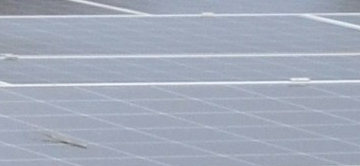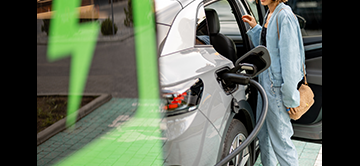The war unleashed by Russia in Ukraine has highlighted the dependence of the European Union's economies on Russian natural gas imports. Beyond the necessary decisions taken in urgent circumstances, it is important to prevent the threat of supply cuts from being used as a weapon against democracies in the future. If Europe decides that there is a future in gas, it must invest massively in network infrastructure, pipelines and LNG terminals.
REPowerEU
In reaction to the Russian aggression on Ukraine, on March 8, 2022 the European Commission published a Communication entitled "REPowerEU: Joint European Action for more affordable, secure and sustainable energy". The European Union's (EU) energy dependence on Russia is very high: 45% of our gas consumption, 27% of our oil consumption and 46% of our coal consumption come from Russia. The three Annexes accompanying the Communication are devoted to immediate measures to reduce the energy bills of households and professionals. But the Communication is essentially forward-looking. The Commission puts forward three emancipation axes: diversifying our supply, accelerating the deployment of renewable energy sources and reducing our energy consumption.
To achieve these objectives, the public authorities have implemented various instruments such as subsidized feed-in tariffs for electricity produced by solar and wind power, and energy efficiency credits that complement a market for carbon emission permits, the keystone of European climate policy. But these measures will not be enough to emancipate us from natural gas, as its inclusion in the green taxonomy attests. To reduce our dependence on Russian supplies, the EU needs to be able to source gas from elsewhere, and thus diversify its gas supplies.
How can we diversify supplies?
The first option is to replace some of the Russian gas with biomethane and green hydrogen, which would require massive investments in a low-carbon hydrogen industry (production, storage, transport) that is still in the planning stage. The second option, which is not exclusive, is to find other natural gas suppliers. There are two ways to transport gas from extraction sites to import nodes: by pipeline or by ship in a liquid state (LNG). The advantage of the pipeline is that it does not require the double transformation of gas/liquid/gas, but it has several disadvantages: the costs associated with the distance, the environmental impact along the route and, above all, the lock-in of the contractual relationship between the exporting and importing nodes, in addition to the possible interference of the countries crossed. Conversely, LNG tankers can cross oceans, use the part of the cargo that is regasified by rolling for propulsion, and obtain supplies from and deliver to all countries equipped with LNG terminals. With liquefied natural gas, we are moving from bilateral monopolies to a competitive global market.
The return of MidCat?
This does not mean that all interconnections between the EU and the rest of the world by pipeline should be avoided. For example, Algeria, which is less distant than Russia, supplies nearly 13% of the gas consumed in Europe thanks to the pipelines that connect North Africa with Spain and Italy, and to the LNG tankers leaving from Arzew and Skikda (see map). By creating an interconnection between the Spanish and French networks east of the Pyrenees, it would be possible to increase deliveries entering the European Union through Spain, thus coming from Algeria and various other countries from which Spain imports LNG in its six gas terminals. This interconnection, named MidCat for Midi-Catalonia, has had mixed fortunes. While the project was strongly supported by Miguel Cañete when he was European Commissioner for Energy and Climate Action, the completion of its central part was rejected in 2019 by the Spanish and French energy regulators on the grounds that the exchange capacities that already exist between France and Spain were not saturated and that the expected gains did not cover the costs to be incurred. As a result, MidCat, which was included in the first three bi-annual lists of Projects of Common Interest of the EU, has disappeared from the 2019 and 2021 lists. But the Russian threat could put it back on the agenda, as the President of the European Commission, Ursula von der Leyen, suggested on 5 March in Madrid (Le Monde).
A complete MidCat interconnection would ensure that gas from Spain can enter France. But there is no guarantee that Algerian gas will reach the rest of Europe to replace Russian gas. It must first arrive in Spain, but one of the two pipelines linking Algeria to Spain crosses Morocco (Maghreb Europe Pipeline) and as the relations between Algeria and Morocco are currently at a low ebb. Algeria no longer supplies it. Instead, Spain delivers gas to Morocco through the pipeline that crosses the Strait of Gibraltar. Secondly, gas arriving in France from the south must be delivered to other European countries, which will require reinforcement of the French domestic network, particularly in the Rhone Valley.
*
* *
The equation to be solved is not simple. In the south, with its two trans-Mediterranean gas pipelines and seven gas terminals, the Iberian Peninsula has excess gas capacity. In the north and east, continental Europe is seeking to escape the domination of Russian gas. In the middle, France can satisfy both parties provided it invests twice, in the MidCat interconnector and in strengthening its domestic network. If the project is put back on the table, we can therefore expect lengthy discussions to arrive at a cost breakdown acceptable to all parties.





